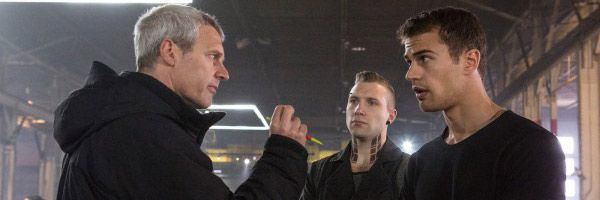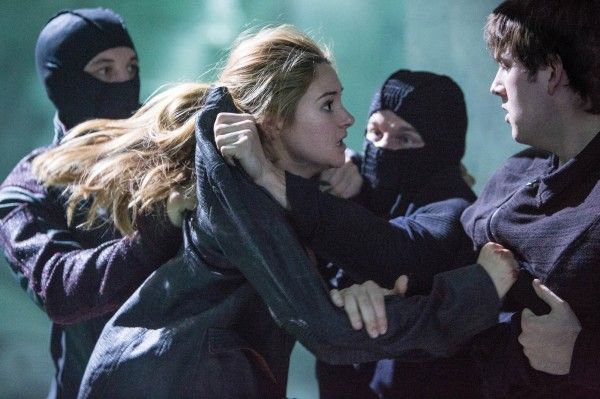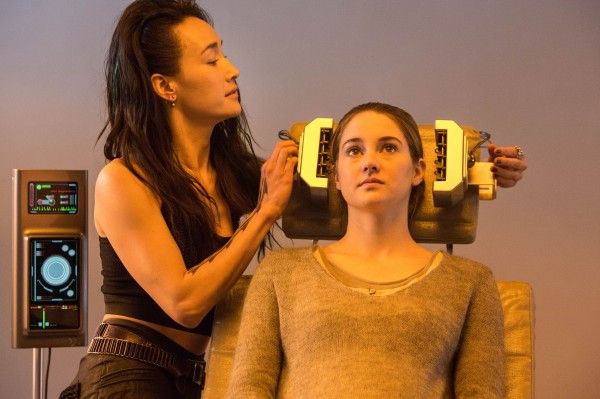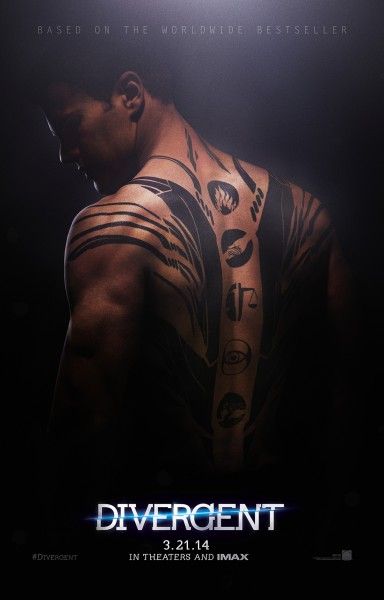As the director behind films like The Illusionist and Limitless, filmmaker Neil Burger has a flair for impressive visuals. For his next directorial effort, Burger is trying his hand at a potentially major feature film franchise with an adaptation of Veronica Roth’s futuristic thriller YA novel Divergent. Bringing the world of the book to life is no easy task, but Burger is game for the challenge and has an eye towards crafting something that will stand out amongst the various other franchises that are currently populating movie theaters.
While visiting the Chicago set of Divergent earlier this year with a group of other journalists, I was able to speak with Burger about the film. The director talked about which scenes most intimidated him, having some knowledge about how the third book ends before filming began, his approach to the book’s extreme level of violence, his unique visual take on the material (which involves ditching "gritty" for something more cinematic), and more. Hit the jump to read the full interview.
Question: Is there a scene that you haven’t done yet that you’re intimidated by?
NEIL BURGER: Yes they’re all intimidating in a way. There’s one scene, there’s the choosing ceremony, which is huge and has Kate Winslet and you know that’s just going to be a big wrestling match with 700 extras and a lot of really good actors, trying to make it all work. Then all in like a really really tight too small space for them. Then the other one is really just the final scene where you guys fight, just to do the finale and pull that off in a really great epic way. All of it, the fight and then how they diffuse the SIM at the end, and just to make that seem great and climactic.
How do you make this movie without knowing how the third book ends?
BURGER: How do I do that? I know a little bit about it actually and I think just enough to know that we’re not off on the wrong path with any of the characters.
What attracted you to this material specifically? And also what do you hope to bring to this film that will differentiate it from the young adult franchises that are already out there?
BURGER: Well I wanted to do it differently. I mean that was one of the things that I was just like “is it going to be just another one of these movies?” Some of which are really good, but I wanted to do something different. We’ve seen a lot of post-apocalyptic movies, we’ve seen these other young adult movies. So I just thought that there was a way to do it in a much more cinematic way, to tell it visually, and also to tell it in a more real way. Going back to your first question, that was what I really liked about it, it was really about human nature, what are you made of? Who are you loyal to? Who are you? And I like that, I really liked her journey that she began as this person who didn’t know where she fit in. She had ideas of where she should be but is that something of a whim? Or is she hoping she’s something that she’s not? Then she really fills those shoes. So I liked that journey I felt like it was a true epic story, and I liked that those ideas were really tightly tied to the action.
It’s fairly violent too. Obviously you are going for a PG-13 rating rather than R so are there certain things you have to tone down or imply rather than show straight on?
BURGER: Yeah I think some of the violence also is less about seeing a fist smash into a face or blood splatter. It’s more about the harrowing situation that you have to step into the ring for the first time and have to fight somebody when you have no business being in that ring. There’s a sense of violence emotionally, with people being killed. Again it’s less about how they die. Just the fact that they do die is really disturbing and upsetting, and intense.
You’ve brought a unique visual style to each of your previous films. I was wondering how you’ve been approaching this film visually. Do you have a specific direction for the visual look of the film?
BURGER: Yeah I wanted to do something more real, not raw in a gritty way but raw in an immediate and intimate way. So one of the things we wanted to do was shoot on the streets of Chicago and we didn’t want to do CG skylines or digital landscapes. So I thought it’s set in Chicago and Chicago is this monumental place, why not use that? That’s the skyline, it’s already here, give or take a few building that might’ve been lost in the war. It’s pretty much the same. So the idea of shooting a movie that’s set in the future but on the streets that are familiar. Even if you think about New York, New York 80 years ago looks like what is it now. The style of the cars were different but it’s still four rubber tires on asphalt. So I thought it would be cool to shoot it like street photography but the streets are 150 years in the future. So to take that realness and bring it to all of it, to make it really immediate and intimate with the characters.
Then also when you see the post-apocalyptic movies they always very gray or blue, there’s a bleakness to them and we didn’t want to do it like 1984 or Children of Men. We wanted to do it where she wants to be a part of the system, so if she’s buying into it, I want the audience to buy into it as well. They should want her to be apart of it. If it’s so bleak to start with then you’re like “you’re making a big mistake right from the get-go.” In fact when the whole society she wants to find her place in, then when she comes to Dauntless it’s liberating for her. So I wanted those places, the whole society and Dauntless in particular, to be kind of luminous. That’s why we're doing the lighting, the whole pit being made out of white marble instead of gray or black or brown stone, to make it luminous or buoyant in a way. So those are a couple things we’re doing that makes it different from other post-apocalyptic movies.
Peruse the rest of our Divergent set visit coverage below:
- DIVERGENT Set Visit Report; 30 Things to Know about the Next Big YA Franchise
- Shailene Woodley and Theo James Talk the Pressures of the Franchise, Differences from the Book, and More on the Set of DIVERGENT
- Producer Douglas Wick Talks Casting Four, Changes from the Book, HUNGER GAMES Comparisons, the Director Search, and More on the Set of DIVERGENT
- Zoe Kravitz Talks Bonding with Castmates, Fight Training, Consulting Jennifer Lawrence for Advice, and More on the Set of DIVERGENT




